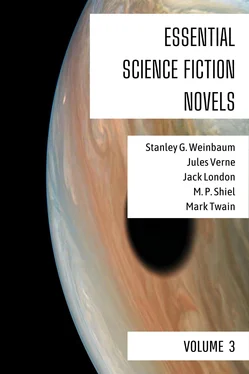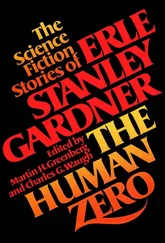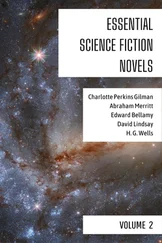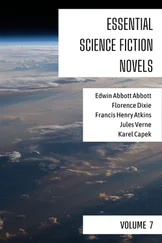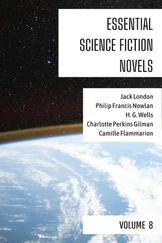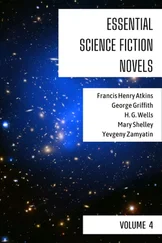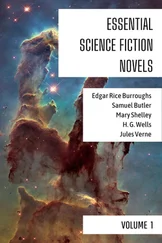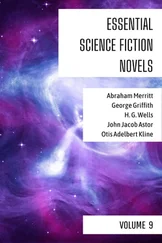Descent into the Maelstrom ,
MS. Found in a Bottle , and other stories were novel in the manner in which they united the scientifically real and the supernatural.
The Pit and the Pendulum , with its diabolical machinery, is akin to the modern mechanistic stories rather than to anything that had preceded it. Poe paved the way for H. G. Wells’s use of the ghostly mechanical and scientific narratives, as his stories of hypnotism with its hideous aftermath of horror must have given suggestion for Arthur Machen’s revolting stories of physical operations with unearthly consequences. An example of the later manifestations of supernaturalism in connection with science is in Sax Rohmer’s tales of Fu-Manchu, the Chinese terror, the embodied spirit of an ancient evil that entered into him at his birth, because of his nearness to an old burying-ground, and who, to his unholy alliance unites a wizard knowledge of modern science in its various aspects. With every power of cunning and intellect intensified, with a technical knowledge of all means with which to fight his enemies, he ravages society as no mere sorcerer of early fiction could do.
The modern stories of magic have a skillful power of suggestiveness, being so cunningly contrived that on the surface they seem plausible and natural, with nothing supernatural about them. Yet behind this seeming simplicity lurks a mystery, an unanswered question, an unsolved problem. W. W. Jacobs’s The Monkey’s Paw , for instance, is one of the most effectively terrible stories of magic that one could conceive of. The shriveled paw of a dead monkey, that is believed by some to give its possessor the right to have three wishes granted, becomes the symbol of inescapable destiny, the Weird, or Fate of the old tragedy, though the horrors that follow upon the wishes’ rash utterance may be explained on natural grounds. The insidious enigma is what makes the story unforgettable. Barry Pain’s Exchange might be given as another example of problematic magic that owes its power to elusive mystery. The witch-woman, the solitary Fate, who appears to persons offering them such dreadful alternatives, might be conceived of as the figment of sick brains, yet the reader knows that she is not.
Richard Middleton’s The Coffin Merchant seems simple enough on the surface, and the literal-minded could explain the occurrence on normal grounds, yet the story has a peculiar haunting supernaturalism. A coffin merchant claims to be able to know who among passers-by will die soon, and hands a man an advertisement for a coffin, asserting that he will need it. The man later goes to the shop to rebuke the merchant for his methods but ends by signing a contract for his own funeral. On leaving, he shakes hands with the dealer, after which he unconsciously puts his hand to his lips, feeling a slight sting. He dies that night,—of what? Of poison, of fear, of supernatural suggestion, or in the natural course of events? The series called The Strange Cases of Dr. Stanchion , by Josephine Daskam Bacon, shows instances occurring among the clientele of a famous brain specialist, where the materialist might put aside the explanation of the supernatural, only to be confronted by still greater problems. The relation between insanity and ghostliness in recent fiction is significant and forms the crux of many a story since Poe. Mrs. Bacon’s The Miracle , for instance, has its setting in an insane asylum, but the uncanny happenings almost convince us of the sanity of the patients and the paranoia of the outsiders. We come to agree with the specialist that every person is more or less a paranoiac, and none more so than he who scoffs at the supernatural.
Another aspect of the transfer of magic in modern fiction to a scientific basis is that of second sight or supernatural vision. This motif still retains all its former effect of the unearthly, perhaps gaining more, since the scientific twist seems to give the idea that the ghostly power resides in the atoms and molecules and gases and machines themselves, rather than in the person who manipulates them, which is more subtly haunting in its impression. Second sight has been used as a means for producing uncanny effects all along the line of fiction. Defoe even used it in a number of his hoax pamphlets, as well as in his History of Duncan Campbell , and folk-lore is full of such stories, especially in the Highlands.
The modern use of supernatural vision is based apparently on natural science, which makes the weird power more striking. The Black Patch , by Randolph Hartley, tells of an experiment in optics that produces a strange result. Two students exchange left eyeballs for the purpose of studying the effects of the operation, leaving the right eye in each case unimpaired. When the young men recover from the operation and the bandages are removed, they discover that an extraordinary thing has taken place. The first, while seeing with his right eye his own surroundings as usual, sees also with his left—which is his friend’s left, that is—what that friend is looking at with his right eye, thousands of miles away. The severing of the optic nerve has not disturbed the sympathetic vision between the companion eyes, so this curious double sight results. In a quarrel arising from this peculiar situation, the first man kills the second, and sees on his left eye the hideous image of his own face distorted with murderous rage, as his friend saw it, which is never to be effaced, because the companion eye is dead and will see no more.
Another instance of farsightedness is told in John Kendrick Bangs’s The Speck on the Lens , where a man has such an extraordinary left eye that when he looks through a lens he sees round the world, and gets a glimpse of the back of his own head which he thinks is a speck on the lens. Only two men in the world are supposed to have that power.
The Remarkable Case of Davidson’s Eyes , by H. G. Wells, is an interesting example of this new scientific transference of magic vision. Davidson is working in a laboratory which is struck by lightning, and after the shock he finds himself unable to visualize his surroundings, but instead sees the other side of the world, ships, a sea, sands. The explanation given by a professor turns on learned theories of space and the Fourth Dimension. He thinks that Davidson, in stooping between the poles of the electro-magnet, experienced a queer twist in his mental retinal elements through the sudden force of the lightning. As the author says: “It sets one dreaming of the oddest possibilities of intercommunication in the future, of spending an intercalary five minutes on the other side of the world, of being watched in our most secret operations by unexpected eyes.” Davidson’s vision comes back queerly, for he begins to see the things around him by piecemeal, as apparently the two fields of vision overlap for a time.
Brander Matthews in The Kinetoscope of Time introduces an instrument with eyepieces that show magic vision. The beholder sees scenes from the past, from literature as well as from life, has glimpses of Salome dancing, of Esmerelda, witnesses the combat between Achilles and Hector, the tourney between Saladin and the Knight of the Leopard. The magician offers to show him his future—for a price—but he is wise enough to refuse.
Magic views of the future constitute an interesting aspect of the supernatural vision in modern stories. The Lifted Veil , by George Eliot, is an account of a man who has prophetic glimpses of his fate, which seem powerless to warn him, since he marries the woman who he knows will be his doom, and he is aware that he will die alone, deserted even by his servants, yet cannot help it. He sees himself dying, with the attendants off on their own concerns, knows every detail beforehand, but unavailingly. This suggests Amos Judd , by J. A. Mitchell, which is a curious instance of the transition stage of second sight, related both to the old sorcerer type and to the new scientific ideas. Amos Judd, so called, is the son of an Indian rajah, sent out of his country because of a revolution, and brought up in ignorance of his birth in a New England farmhouse. Vishnu, in the far past, has laid his finger on the brow of one of the rajah’s ancestors, thereby endowing him with the gift of magic vision, which descends once in a hundred years to some one of his line. Amos Judd therefore, can see the future by pictures, beholding clearly everything that will happen to him. He sees himself lying dead at a desk, on which stands a calendar marking the date, November 4th. His friends persuade him to live past the date, and they think all is well, till one day while he is on a visit to a strange house he is killed by an assassin. They find him lying at a desk, with an out-of-date calendar beside him, marking November 4th.
Читать дальше
